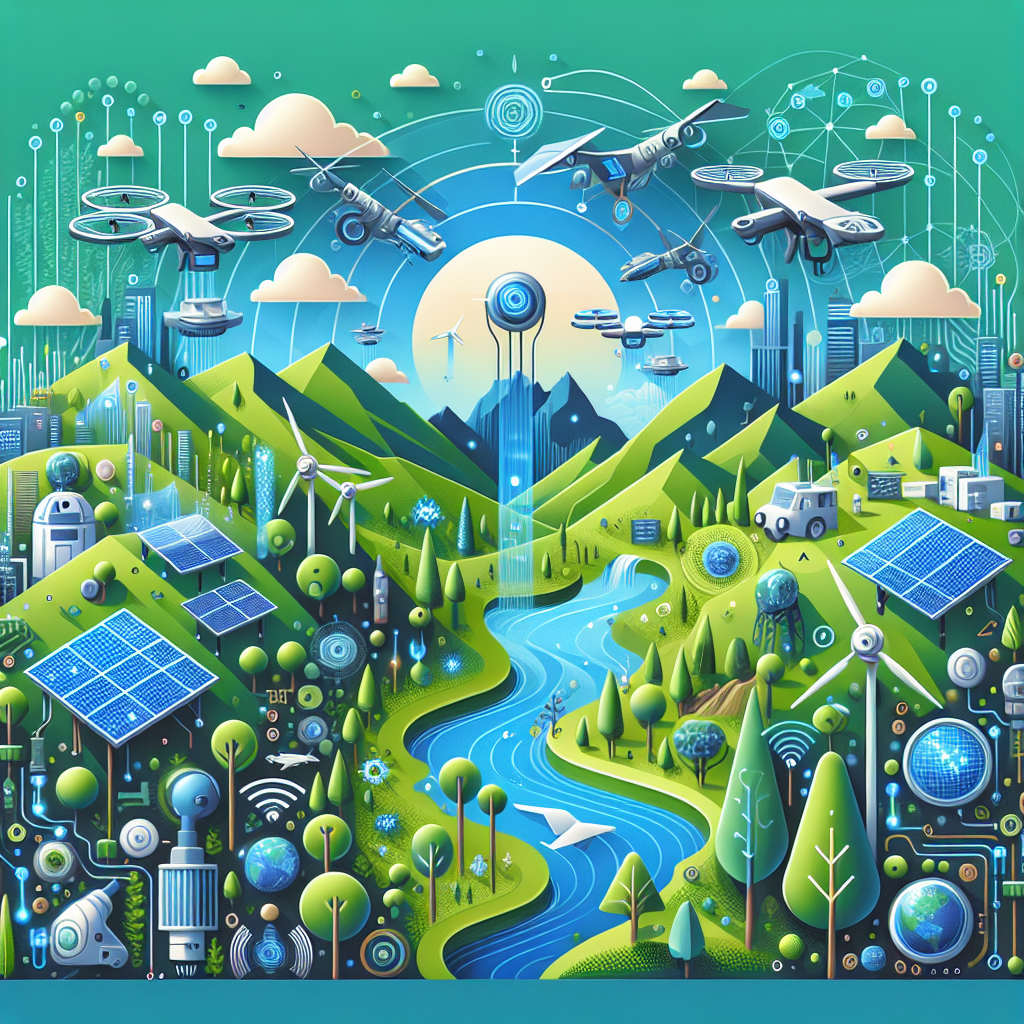Harnessing AI-Driven Solutions for Environmental Monitoring and Conservation
In recent years, the use of artificial intelligence (AI) in various fields has been on the rise. From healthcare to finance, AI has proven to be a powerful tool in driving innovation and improving efficiency. One area where AI is making a significant impact is in environmental monitoring and conservation.
With the increasing threats to our planet’s biodiversity and natural resources, it has become more important than ever to monitor and protect the environment. AI-driven solutions are revolutionizing the way we collect and analyze data, enabling us to better understand the challenges facing our planet and develop more effective conservation strategies.
AI has the potential to revolutionize environmental monitoring and conservation efforts in several key ways:
1. Improved data collection and analysis: AI algorithms can process vast amounts of data in a fraction of the time it would take a human to do so. This allows researchers to collect and analyze data more quickly and accurately, leading to better insights into environmental trends and threats.
2. Real-time monitoring: AI-powered sensors and drones can provide real-time data on environmental conditions, allowing researchers to quickly respond to changes in the environment and take proactive measures to protect natural resources.
3. Predictive modeling: AI can be used to develop predictive models that forecast future environmental changes based on historical data. This can help researchers anticipate and mitigate the effects of climate change, deforestation, and other threats to the environment.
4. Enhanced conservation efforts: By analyzing data on species populations, habitat loss, and other environmental factors, AI can help identify areas in need of conservation efforts and prioritize conservation actions to maximize impact.
5. Automating tasks: AI can automate repetitive tasks such as data collection, image analysis, and report generation, freeing up researchers to focus on more strategic conservation efforts.
One example of AI-driven solutions in environmental monitoring and conservation is the use of satellite imagery and machine learning algorithms to track deforestation in the Amazon rainforest. By analyzing satellite data and identifying patterns of deforestation, researchers can better understand the drivers of deforestation and develop strategies to combat it.
Another example is the use of AI-powered drones to monitor wildlife populations and track the movement of endangered species. By collecting data on species populations and habitat conditions, researchers can identify areas in need of conservation efforts and implement targeted interventions to protect endangered species.
FAQs:
Q: How is AI being used in environmental monitoring and conservation?
A: AI is being used in environmental monitoring and conservation in a variety of ways, including data collection and analysis, real-time monitoring, predictive modeling, and automating tasks. AI algorithms can process vast amounts of data quickly and accurately, allowing researchers to better understand environmental trends and threats.
Q: What are some examples of AI-driven solutions in environmental monitoring and conservation?
A: One example is the use of satellite imagery and machine learning algorithms to track deforestation in the Amazon rainforest. Another example is the use of AI-powered drones to monitor wildlife populations and track the movement of endangered species.
Q: How can AI help improve conservation efforts?
A: AI can help improve conservation efforts by providing researchers with better insights into environmental trends and threats, enabling real-time monitoring of environmental conditions, developing predictive models to forecast future environmental changes, and automating repetitive tasks to free up researchers to focus on strategic conservation efforts.
Q: What are the benefits of using AI in environmental monitoring and conservation?
A: The benefits of using AI in environmental monitoring and conservation include improved data collection and analysis, real-time monitoring of environmental conditions, predictive modeling to forecast future environmental changes, enhanced conservation efforts, and automating tasks to increase efficiency and effectiveness.
In conclusion, AI-driven solutions are revolutionizing the field of environmental monitoring and conservation, providing researchers with powerful tools to better understand and protect our planet’s biodiversity and natural resources. By harnessing the power of AI, we can develop more effective conservation strategies and work towards a more sustainable future for generations to come.

